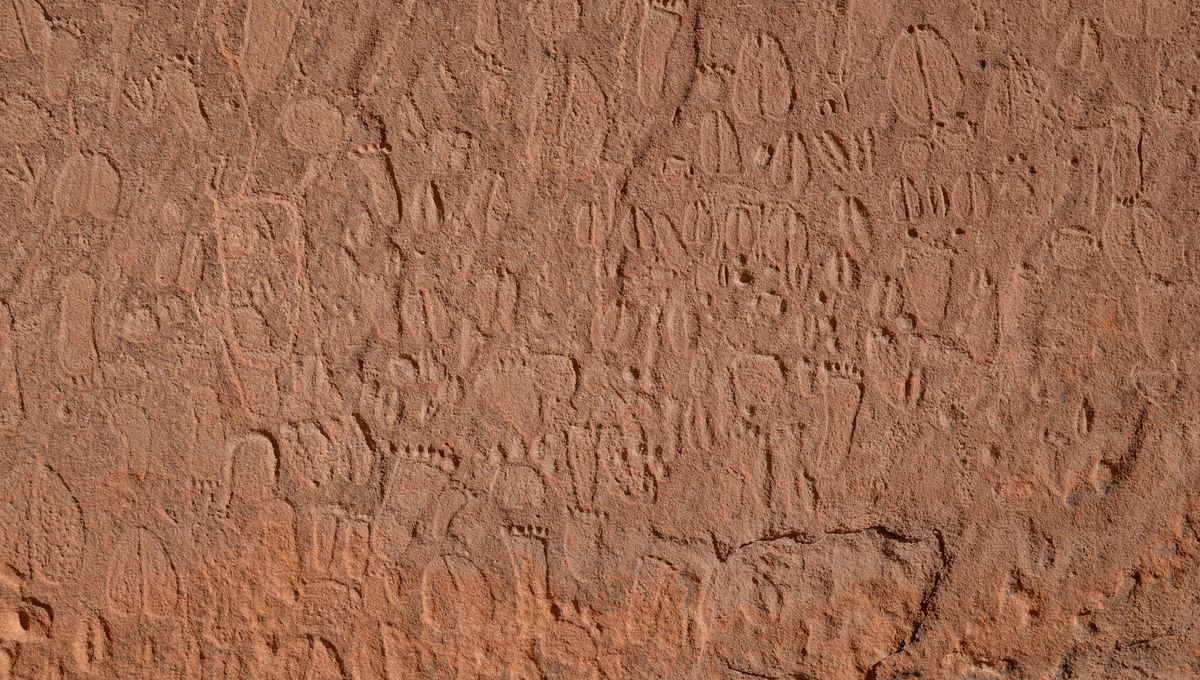
The Stone Age inhabitants of Namibia were so adept at carving human and animal footprints that modern-day Indigenous trackers can tell exactly which species these ancient engravers were depicting in their artworks. When examining over 500 examples of tracks carved into rock faces, the present-day experts were able to identify not only the type of animal, but also the sex, age, and even the exact leg in more than 90 percent of cases.
Researchers engaged the help of three Indigenous tracking experts – named Tsamgao Ciqae, /Ui Kxunta, and Thui Thao – all of whom have worked as professional tracking experts for commercial hunting in the Kalahari desert. When presented with 513 engravings of animal prints in rock art from the Later Stone Age, the experts identified 345 quadrupeds and 62 bird tracks (106 human and 407 animal from 40 different species; Rhinoceros sp. is listed as a taxon, but not counted as a separate species).
In total, the Indigenous trackers identified 40 different species, with animals such as giraffes, kudus, springboks, guinea fowls, and white and black rhinos being the most common. Somewhat less frequently depicted were African wildcats, baboons, blue wildebeest, and buffalos, while only a single cheetah print was found in the collection.
Hailing from the Doro! Nawas Mountains, the Neolithic artworks contained 398 tracks belonging to adult animals compared to 98 from non-adults, while male tracks outnumbered female prints by 227 to 180. In addition to the animal markings, the researchers also found 106 human tracks among the carvings.
Unlike the animal prints, the human tracks were predominantly non-adult, with only 15 attributed to fully developed individuals. Overall, 74 of the humans depicted in the rock art were identified as male with 32 were female. Further analysis revealed the presence of 56 right-foot prints and 50 markings pertaining to left feet.
“It appears to be the case that prehistoric engravers did not produce generic human footprints without markers of sex or age,” write the study authors. “Similarly, the engravings of animal tracks do not include generic forms; instead, each is specific.”
This finding is particularly striking when one considers that up to 80 percent of human figures that appear in ancient rock art in central Namibia are “zero-marked”, meaning they have no specific sex or age. Likewise, a much lower diversity of species can be seen in the animal figures from this region than in the animal prints.
Noting the remarkable level of detail and lifelike accuracy of these engraved tracks, the study authors suggest that these footprints were probably “endowed with complex meanings.” However, after proposing and then rejecting a number of different hypotheses, the researchers are unable to determine exactly what purpose these remarkable carvings might have served.
“Whatever the deeper and symbolic meanings of these engravings, it could only emerge in its entirety through a direct conversation with the artists,” they conclude.
The study has been published in the journal PLOS ONE.
Source Link: Stone Age Carvings In Namibia Depict Incredibly Detailed Human And Animal Tracks